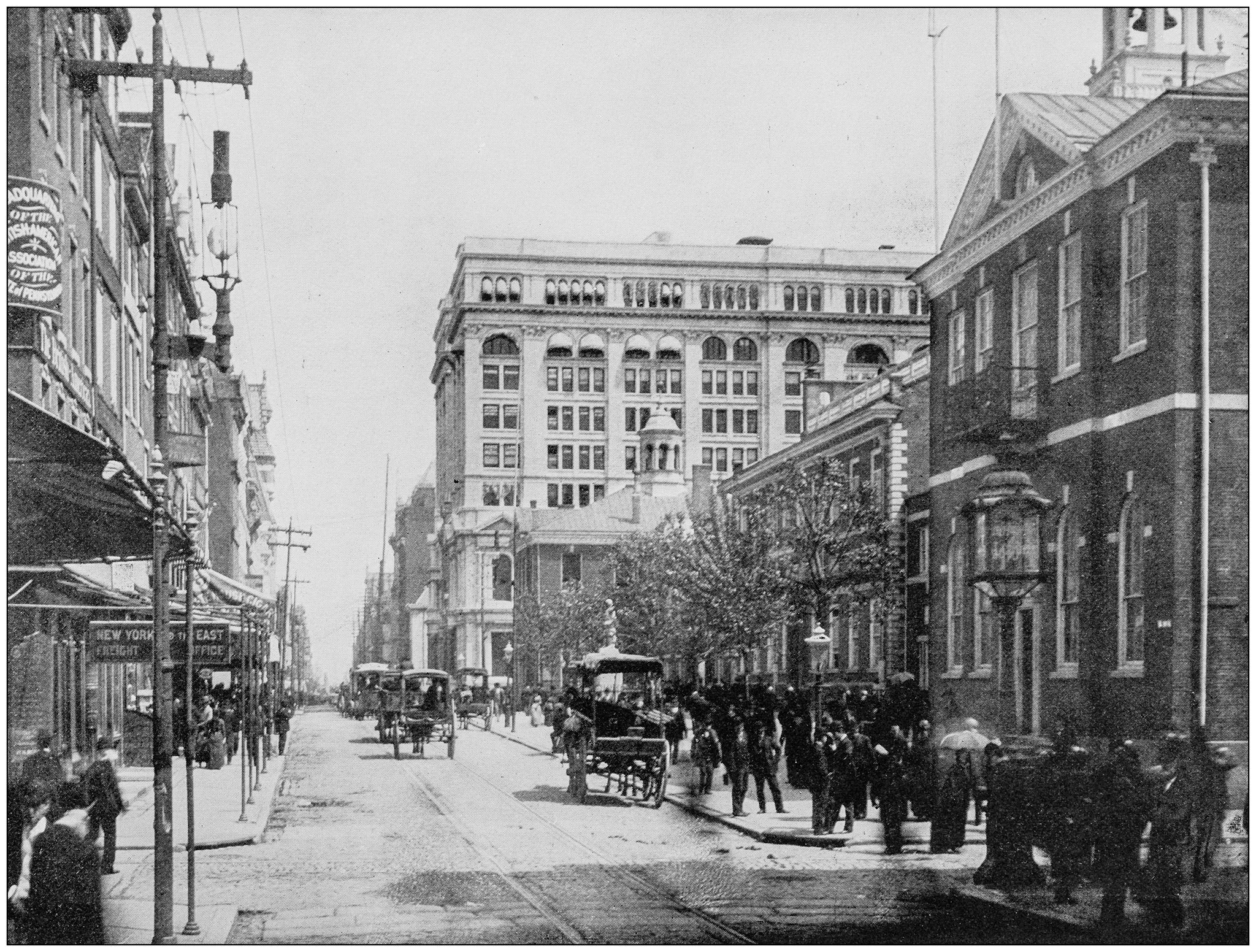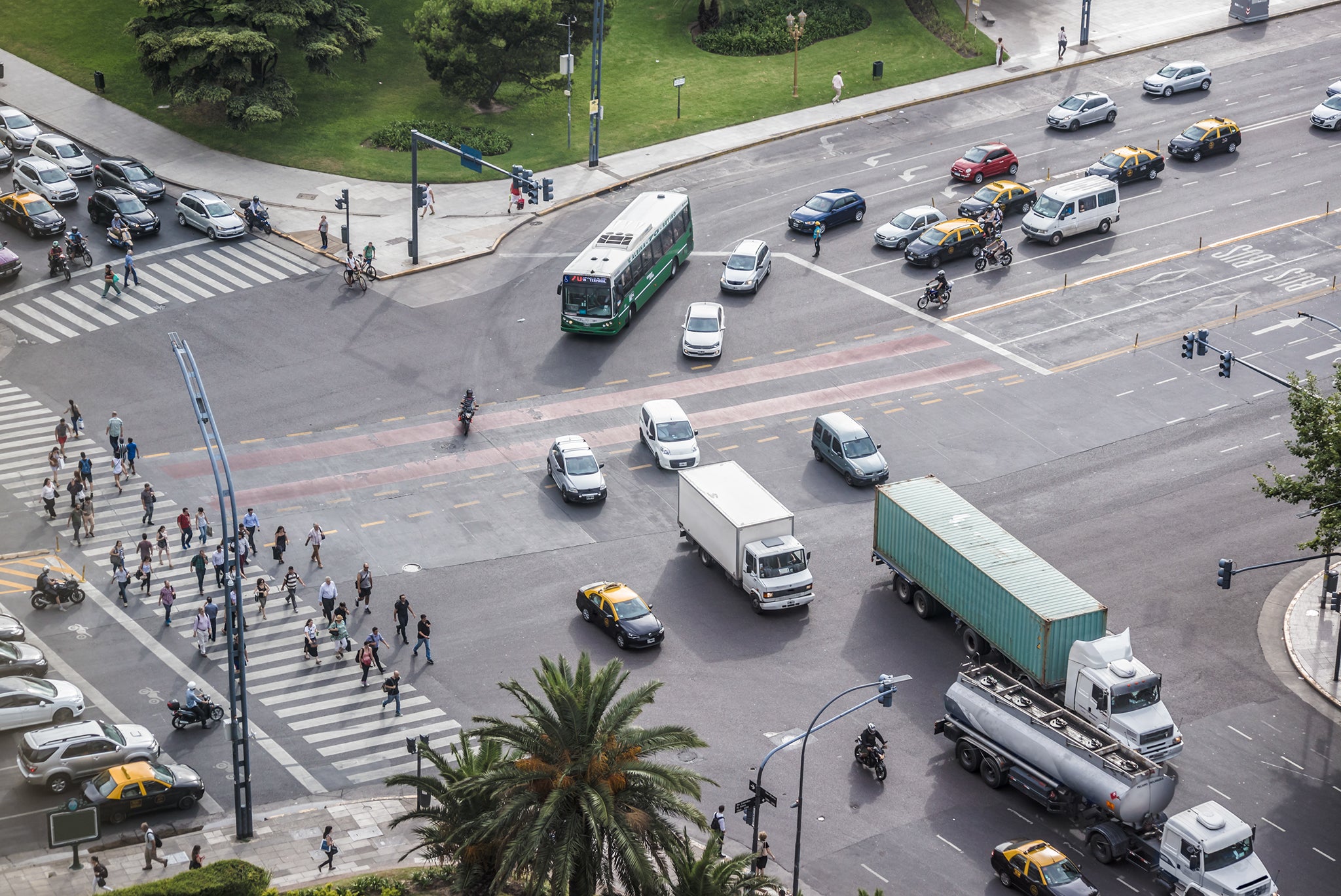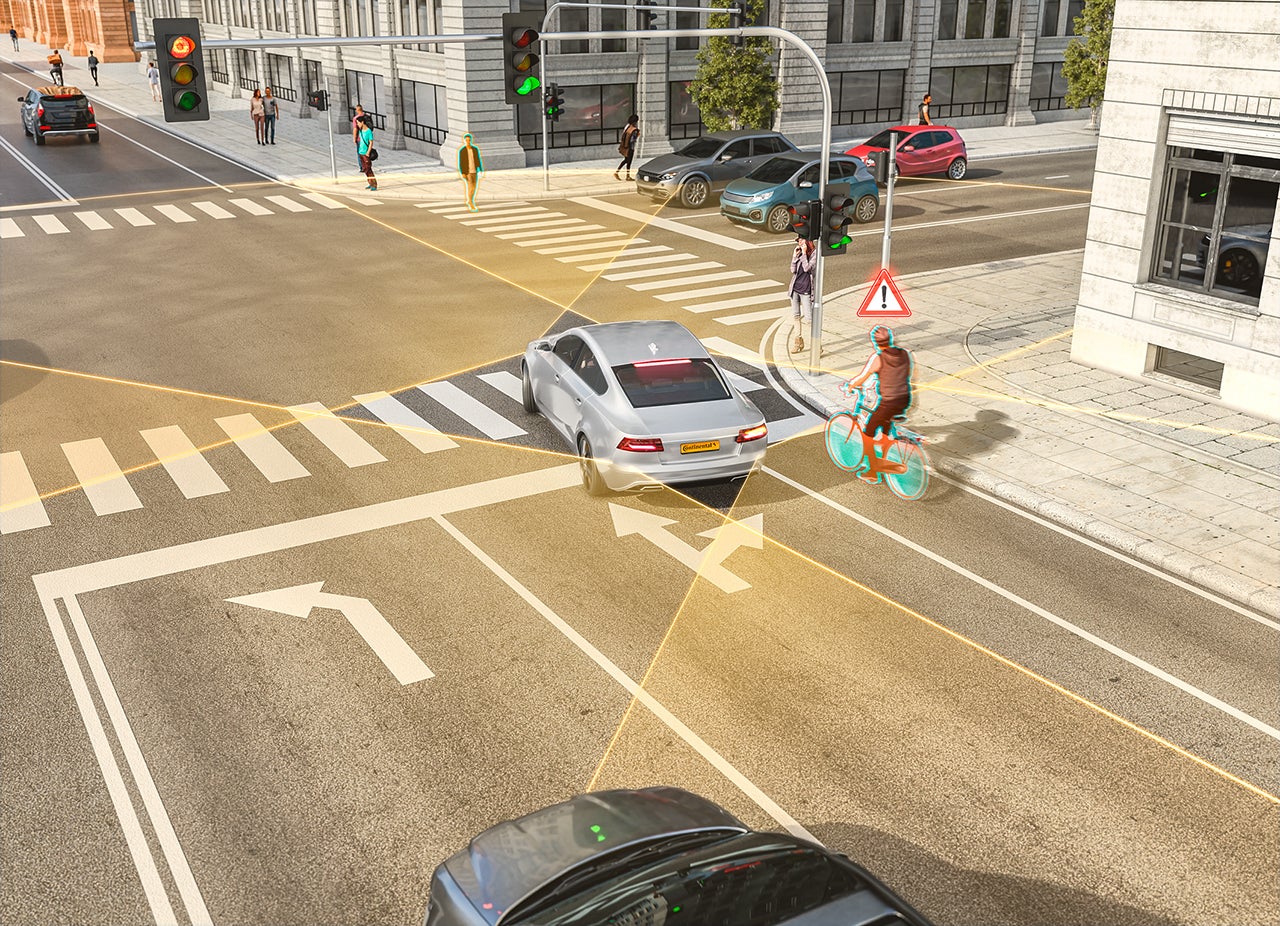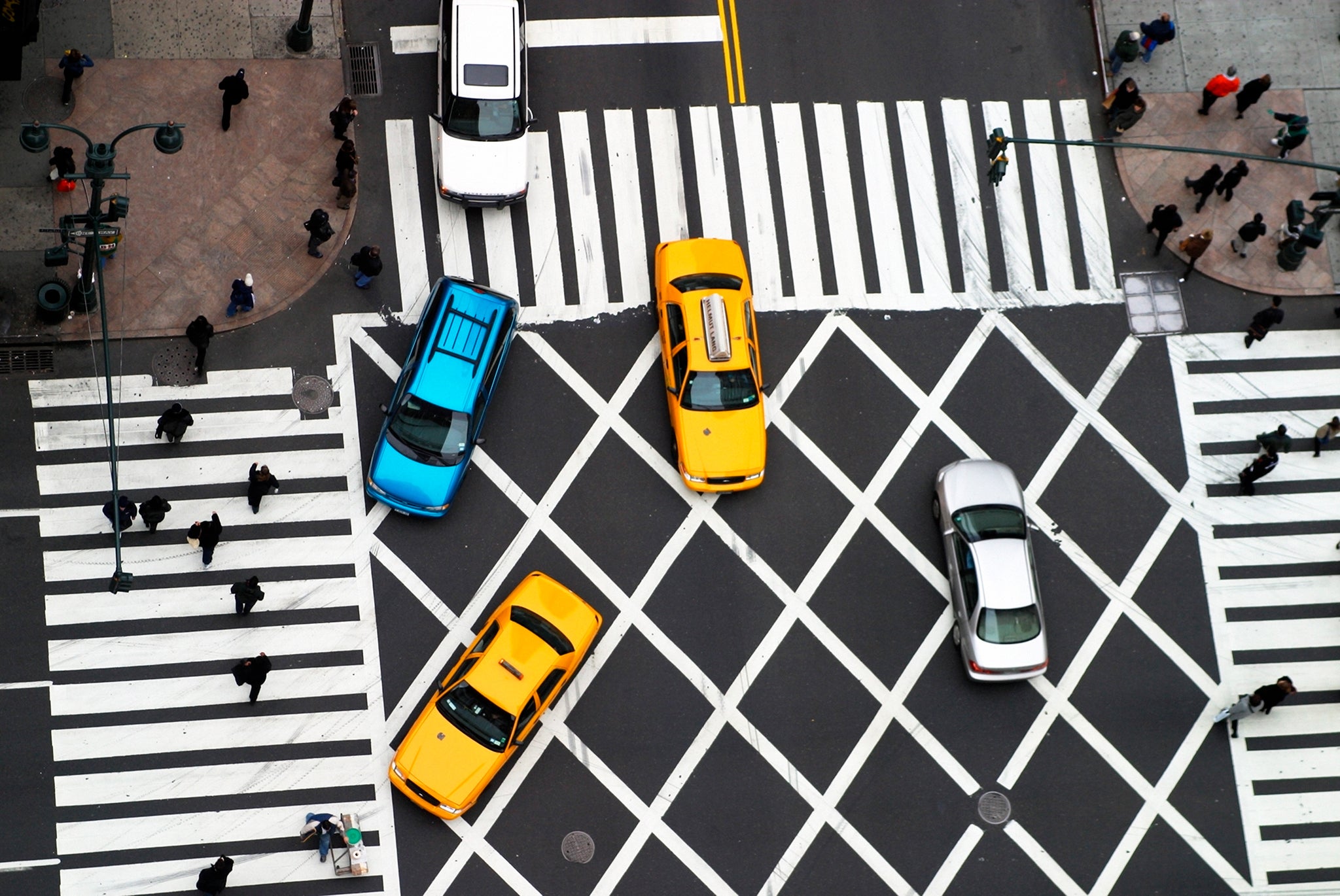
#Classic
The past, present and future of road safety
Can smart infrastructure make public roads shared spaces again?

Road safety has come a long way in the last century. Gone are the days of unstructured chaos with no highway code. Today road users are separated by traffic lights, crossings, cycle lanes and pavements. Technology has also helped infrastructure and vehicles become safer and we now play a leading role in developing innovative safety solutions, from driver assist systems to smart tyres.
But what does the future hold? As autonomous driving edges closer to reality, we could soon see a further revolution in how man and machine share our streets.
From frantic chaos to safer roads
‘Ding ding!’ As cars rattle past in both directions, a horse and cart trundles across the street. Pedestrians are scattered everywhere, darting between trams, animals, cyclists and even the odd automobile as they hurry about their business. Welcome to the chaos of an early 20th century city street. At the beginning of the 1900s, mobility was changing dramatically. Horses were on the way out, with trams, buses and cars on the way in. Traffic was becoming heavier and faster; accidents more common and more serious.
The automotive industry was quick to recognise this. As car ownership grew, the sector helped to create new laws, infrastructure and features to make streets safer for all road users. Traffic signs and lights soon became a common sight within cities, as did traffic police, helping to maintain safety and enforce the law. Mechanical indicators were added to cars to communicate a driver’s intentions more clearly. In 1909, Germany introduced some of the world’s first national traffic laws, together with a state driving test and license.
 Pedestrians, cars and carts share the street in London
Pedestrians, cars and carts share the street in London
Rules of the road improve global road safety
As roads became more dangerous, further changes were introduced: the first pedestrian crossings appeared in the United Kingdom in the 1930s; Germany brought in its first nationwide speed limit in 1934 – 37 mph (60 km/h) in urban areas. This was abolished in the 1950s in West Germany but reintroduced five years later after a rise in road traffic injuries.
One of the most important developments in road safety, the seatbelt, was surprisingly slow to catch on. Vehicle manufacturers began to offer them as optional extras in the 1950s, but uptake was extremely low. The first compulsory seat belt law wasn’t introduced until 1970, in Australia. However, in many countries they didn’t become mandatory for all passengers until the 1980s.
 Pedestrians separated from traffic in Philadelphia
Pedestrians separated from traffic in Philadelphia
Digital technologies and the road to automation
Although they might sometimes seem chaotic, today's city streets are very different to the haphazard scenes of a century ago. Traffic flows are carefully monitored and controlled, pedestrians stick to the pavement, pedestrian crossings and separate cycle lanes are commonplace.
But safety is still a huge issue. Population growth and rising vehicle ownership mean there are more people on the road than ever before. Approximately 1.3 million people die each year in road traffic accidents (source: WHO). More than half of these are more vulnerable road users like pedestrians, cyclists, and motorcyclists.
Fortunately, technological innovation and digital transformation is helping us to make smart city infrastructure safer and we play a leading role in creating a range of intelligent solutions. Our Development Centre for Passive and Integrated Safety covers everything from crash tests to cutting-edge advanced driver assistance technology.
 Traffic crossing in Buenos Aires, Argentina
Traffic crossing in Buenos Aires, Argentina
Continental's contribution to safer roads: new technologies and intelligent innovation
Turn Assist systems, use short-range radar to detect pedestrians, cyclists or motorcycle riders in difficult-to-see blind spots when making a turn. According to our research in Germany, these could help prevent 5% of accidents in which cyclists are killed or seriously injured.
The backbone of numerous in-car digital technologies, Electronic Stability Control monitors data from each wheel such as speed, angle and acceleration, constantly comparing the driver’s input with the vehicle’s actual behaviour. It can intervene immediately as soon as it detects an issue such as under or oversteer by adjusting the brakes or engine torque.
Of course, we also have tyres covered. Our smart sensors monitor key data like pressure, tread and temperature to ensure optimal tyre health and drastically improve safety.
Technology like this will become increasingly important as human involvement in driving decreases and fully autonomous cars become commonplace. Believe it or not, we already have extensive experience in self-driving vehicles stretching back more than 50 years. In 1968, we developed the first electronically controlled driverless car for tyre testing. Its present-day descendent, our fully autonomous Continental Urban Mobility Experience (CUbE) shuttle, has been through numerous successful testing phases. And for the next stage in automation, we’re developing a self-driving urban delivery system.
There are still challenges to overcome before we see widespread adoption of smart vehicles on public roads: technological and regulatory hurdles, as well as public acceptance of a new form of mobility. But as experts like those in our Autonomous Mobility and Safety unit continue to perfect sensor technology and human-machine interaction, this will only be a matter of time.
 New radar sensors offer 360 degree coverage of surrounding traffic
New radar sensors offer 360 degree coverage of surrounding traffic
 Right turn assist systems for bicycle safety
Right turn assist systems for bicycle safety
Back to the future with smart infrastructure
Automation and smart infrastructure have the potential to reduce risk and make our streets much safer. After all, more than 90% of road traffic accidents are caused by human error (source: European Commission). Imagine a streetscape in which road traffic accidents are almost impossible. Cutting-edge connectivity like 5G will enable cars and infrastructure to communicate with each other in just milliseconds – no need to second-guess the driver in front or behind. Highly accurate cameras and radar will keep more than one eye on pedestrians, cyclists and anything else that may appear.
As self-driving cars will be able to safely operate in very close proximity to each other, some roads could be made smaller. This would free up extra space for pedestrians, cyclists and other road users. We may even see an end to today’s segregated streets – an intriguing step back to the future where road users share space fluidly and most importantly, safely.
 Back to the future with smart infrastructure
Back to the future with smart infrastructure